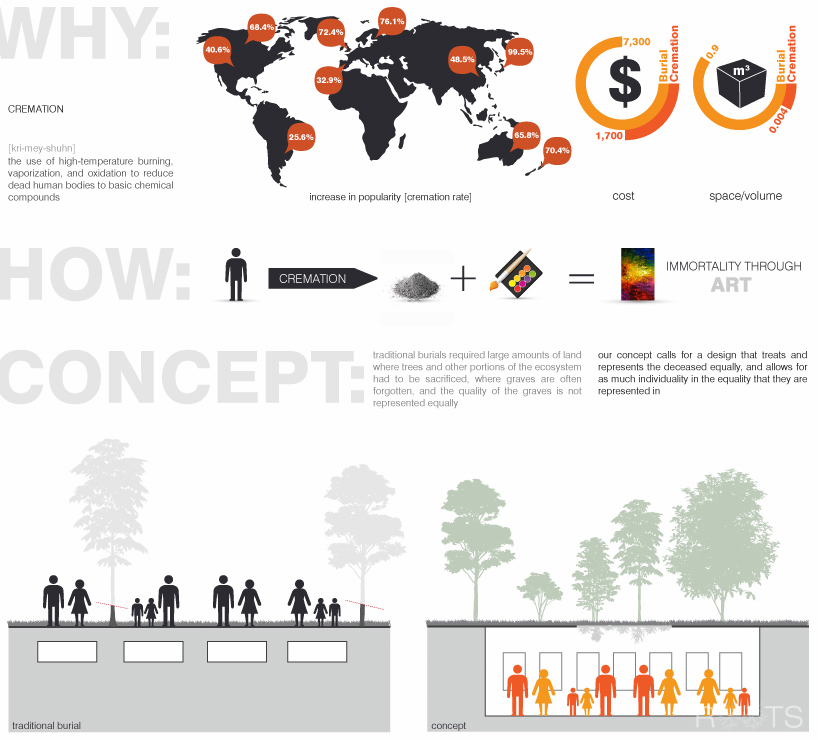
Roots by IDEAL VEJSA from albania
designer's own words:
Our existence dates back millions of year, where life and death have been inseparable part of this existence, defined by the laws of nature itself. Defined as the belief on the supernatural, religion is held as holy and thus has embraced different burial practices and rituals around the world. Burials throughout the existence of life have encountered changes and in some cases also have brought innovation, especially in the last century. Burials have traditionally been more common than cremation, but that is changing, and there are several reasons for this shift. Choosing cremation can cost 60% of what a traditional burial cost, it can be appealing to people of all beliefs – whether religious or secular, as well as being an eco-friendly process.
Walking through history we find art as part of our existence, as well as an essential part of many burial ceremonies in many ancient civilizations, like Egyptians, Mesopotamians, Persians, Romans, Greeks, Incas, Mayans, whether that be in temples, mausoleums, or tombs. Aristotle once said that “the aim of art is to represent not the outward appearance of things or humans, but their inward significance,” therefore our goal became to re-create the relationship between art and death. We think that death, as a process, must be treated and celebrated same as birth.
In our “ROOTS” concept, the relationship between art and death starts by having the deceased`s ashes mixed with paint, a process that can take place in any location as per the deceased`s will or profession, whether that is a stadium, a medical office, a lake, a basketball court, a theater or even in the house. During this process, close family members sit around the family painter and communicate to him memories that they have with the deceased, while the painter`s hand translates those memories and the feel of the ambient into a farewell masterpiece. Our aim is to switch from mourning the passing of the deceased to celebrating his/her life, full of colors.
Once the painting is finished, the observance is followed by having it placed into the “House of Roots”, which is a white modular “resting place” where the painting will become the life itself. “House of Roots” consists of 3 levels (levels are defined according to demand) and it is placed underground, contrary to traditional burial places that took amounts of land where trees and other portions of the ecosystem had to be sacrificed. Placed on the side of a hill, its entrance draws you in with a sculpture-like entryway, then it leads you down to the “exhibit area”, which is pure in architectural terms, and built with solid organic materials that reflect its grandness. The open atrium is bounded on top with the exposed soil and roots of the ground above, off of which water droplets fall into the pool underneath together with escaped light streaks, continuously emitting tranquil sounds to visitors and family members. Dripping sounds constantly remind you of the passing time, and create a connection between the physical space, the living, nature and the immortalized art piece.
Set as a communal remembrance house, walls of the “House of Roots” hold paintings made with the deceased’s` ashes, this way creating for the deceased an “artistic resting place” where they are immortalized and celebrated for the life they have lived. This underground gallery brings the live ones closer to the ground, while the deceased closer to the living, thus giving the space the greatness and the infinity of life. This way of remembrance brings to light the human factor and the tendency to go back to our “roots,” just as millions of years ago our society will represent its civilization in the future through art.
The concept.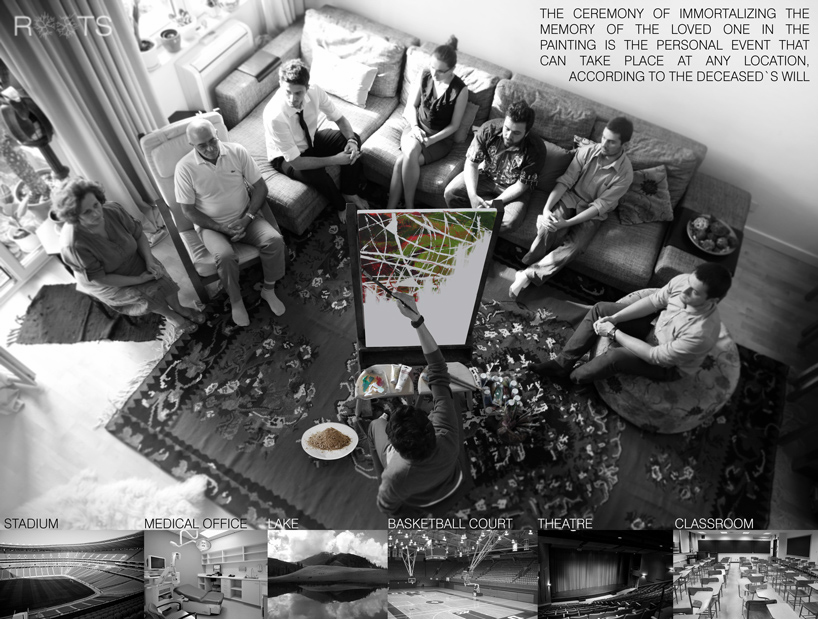
The immortalization ceremony.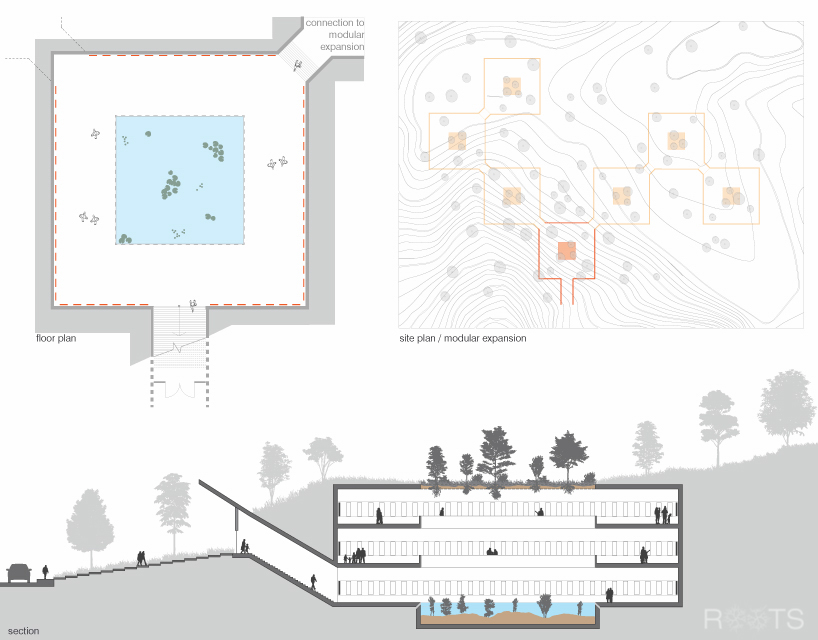
Architectural plans and section. 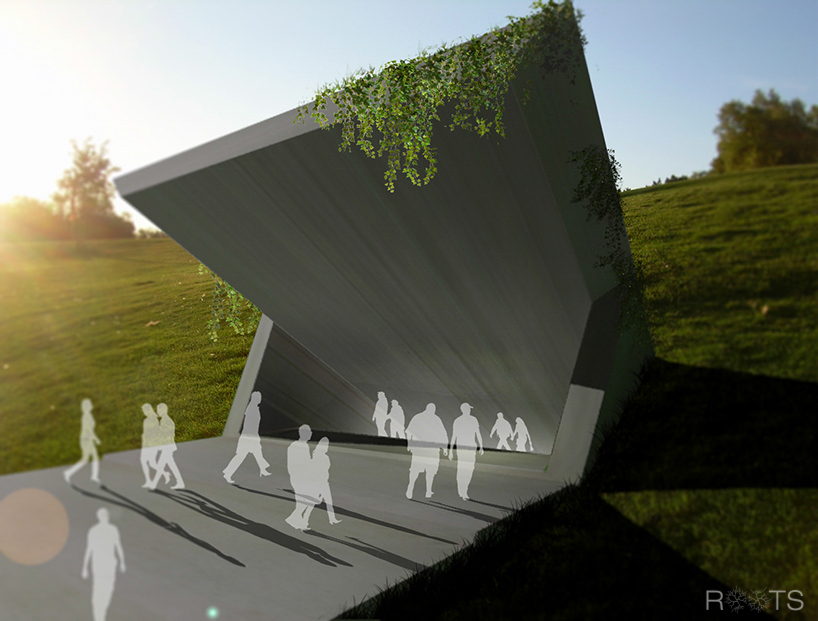
Entrance.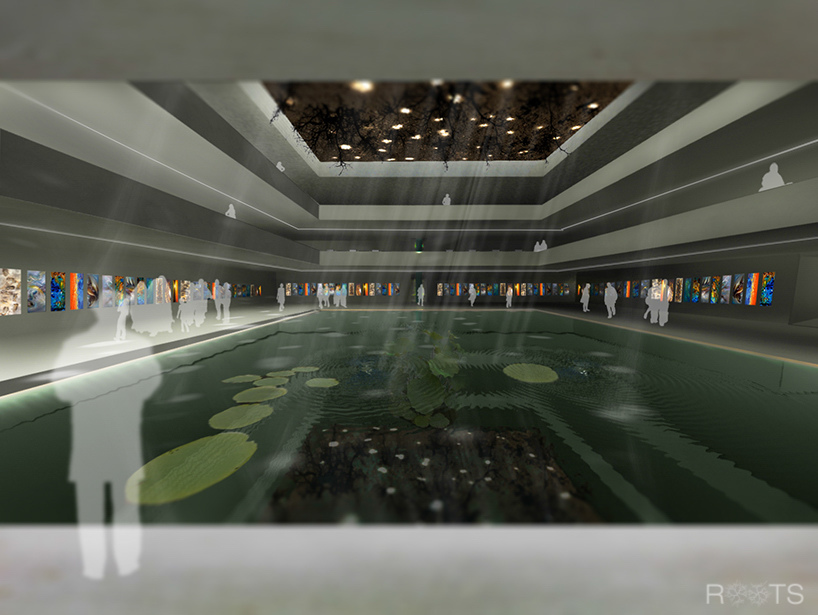
The Roots House.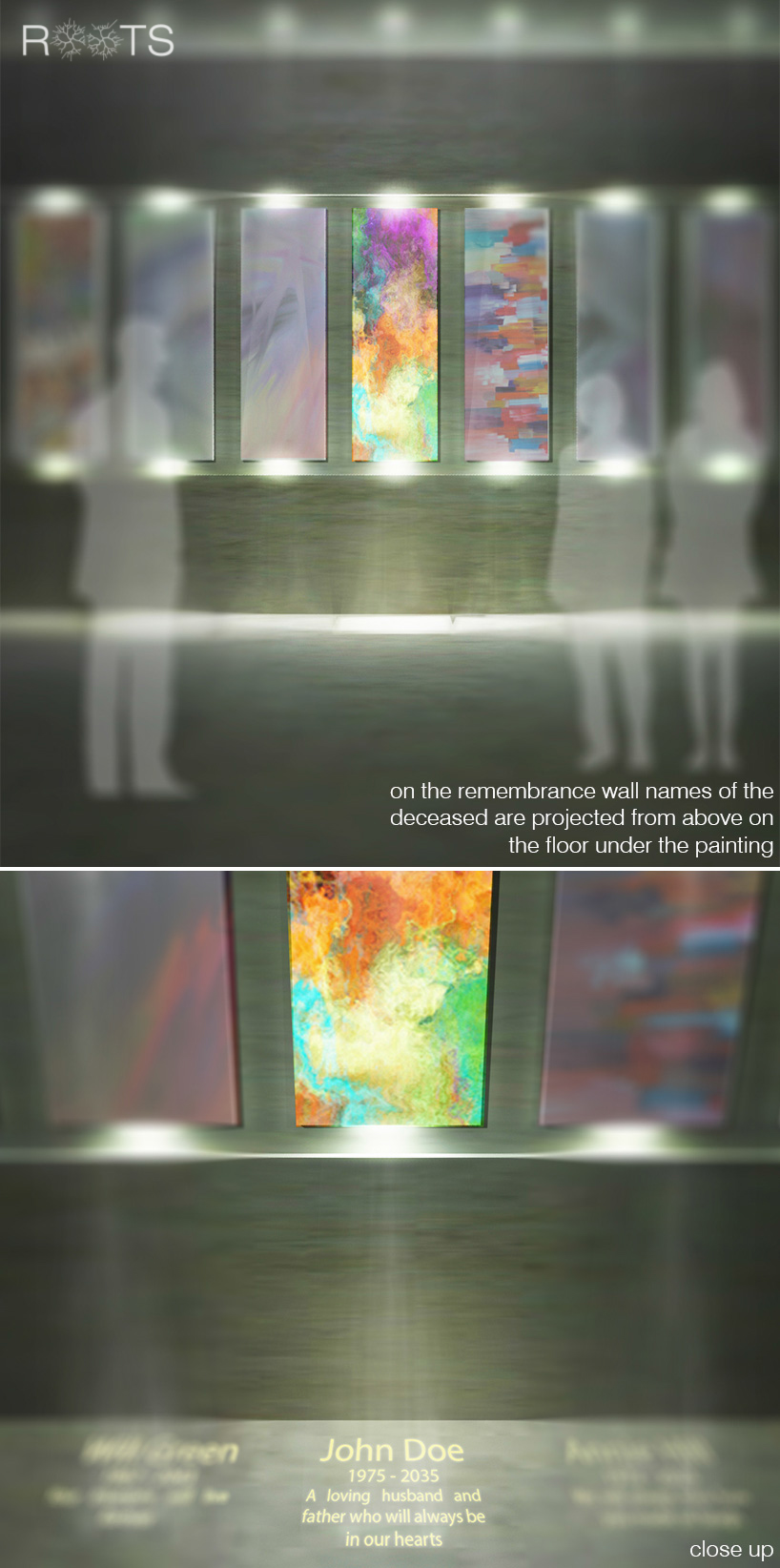
Remembrance wall.